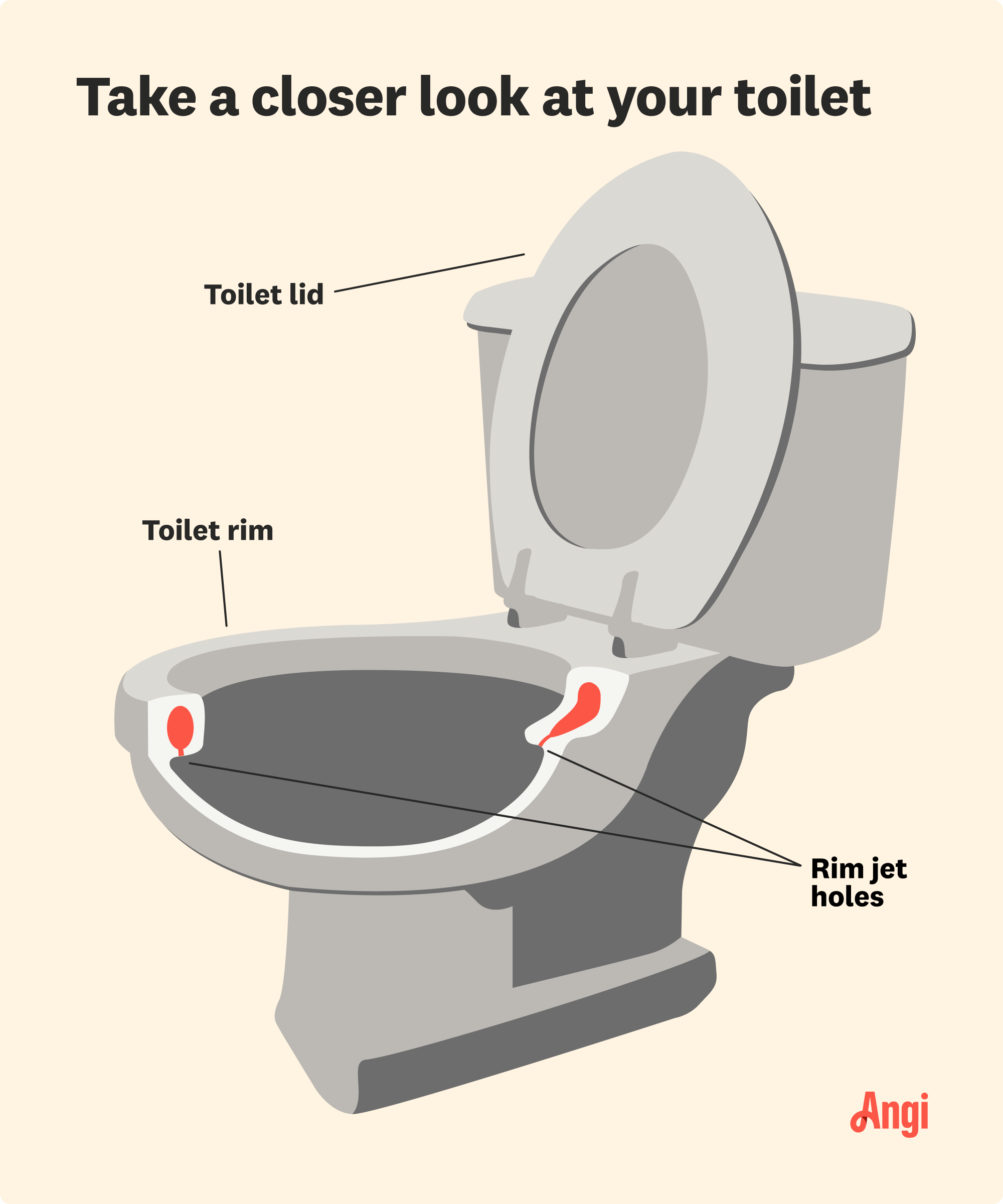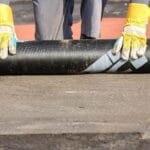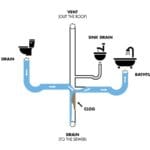Is your toilet taking its sweet time to flush properly? It’s a common problem that can leave you feeling frustrated and bewildered.
A slow-flushing toilet isn’t just an inconvenience—it might signal a bigger issue lurking in your plumbing system. But don’t worry, you’re not alone, and there’s a solution waiting for you. Imagine the satisfaction of a perfectly functioning toilet, where every flush is swift and efficient.
In this post, we’ll dive into the reasons behind your toilet’s sluggish performance and reveal the steps you can take to restore it to its former glory. Stick with us, and you’ll soon have the knowledge you need to conquer this pesky problem once and for all.

Credit: www.angi.com
Common Causes Of Slow Toilet Flush
A slow toilet flush often results from common issues like clogged pipes or a malfunctioning flapper. Hard water deposits can also restrict water flow, causing sluggish flushing. Regular maintenance and checks can help keep your toilet flushing efficiently.
Is your toilet taking its sweet time to flush? You’re not alone. A slow-flushing toilet can be a frustrating issue, but understanding the common causes can lead you to a quick fix. Here’s a breakdown of what might be causing your toilet’s sluggish performance.Partial Blockage In Pipes
A partial blockage in the pipes is a frequent culprit. Imagine flushing a toilet and seeing the water slowly swirl, but not quite emptying the bowl. This could mean something is partially blocking the flow, like toilet paper, sanitary products, or even small toys. It’s worth using a plunger to see if you can clear the obstruction. If the problem persists, a plumber might be needed to inspect deeper down the line.Low Water Levels In Tank
Check the water level in your tank. If it’s too low, the flush won’t have the power needed to clear the bowl. You can easily adjust the float ball or fill valve to ensure the water level reaches the appropriate mark, typically indicated inside the tank. A simple adjustment could restore your toilet’s flushing power and save you from frustration.Faulty Flapper Valve
The flapper valve is a rubber stopper at the bottom of the tank that lifts to allow water into the bowl. If this valve is damaged or not sealing properly, your flush might lack strength. Replacing a flapper is a straightforward DIY task. Many hardware stores offer universal flapper replacements, making it easy to swap out the faulty one.Mineral Buildup In Rim Holes
Ever noticed tiny holes under the rim of your toilet bowl? These rim holes can become clogged with mineral deposits over time, reducing water flow. Using a wire hanger or a small brush can help clear these deposits. A regular cleaning routine can prevent this buildup and keep your toilet flushing efficiently. Have you encountered any of these issues before? Fixing a slow toilet flush can be as simple as adjusting a valve or clearing a blockage. Understanding the problem empowers you to solve it, ensuring your toilet operates smoothly.Assessing The Problem
A slow-flushing toilet can be frustrating. Understanding the cause is crucial. It helps in fixing the issue effectively. Various factors can affect the flush. Begin by assessing the problem thoroughly.
Checking Water Levels
The water level in the tank matters. Remove the tank lid carefully. Check if the water reaches the marked line. Low water levels reduce flush power. Adjust the float to increase water levels.
Inspecting The Flapper
The flapper controls water release. Open the tank lid. Observe the flapper during flushing. A damaged flapper leaks water. It affects the flush efficiency. Replace it if it’s worn or warped.
Examining Pipe Blockages
Blocked pipes slow the flush. Use a plunger to clear minor clogs. If the problem persists, inspect deeper. Consider a plumbing snake for stubborn blockages. This clears obstructions further down the line.
Identifying Mineral Deposits
Mineral deposits can restrict water flow. Hard water often causes this. Examine the rim holes under the toilet bowl. Use a mirror to inspect them. Clean the holes using a wire or vinegar solution.
Diy Solutions For Slow Flush
Struggling with a slow flushing toilet can be frustrating. Fortunately, you can tackle this issue with some DIY solutions. These methods are simple and effective. You don’t need professional help to get your toilet flushing properly.
Adjusting Water Levels
Start by checking the water level in your toilet tank. Ensure it reaches the fill line. If not, adjust the float. This can be done by bending the float arm or turning the adjustment screw. Proper water levels ensure a stronger flush.
Cleaning The Flapper Valve
Inspect the flapper valve for dirt or buildup. This part controls the flow of water. A dirty flapper can restrict water movement. Clean it gently using a sponge or cloth. A clean flapper can improve flush speed.
Removing Blockages
Examine the toilet bowl and pipes for blockages. Use a plunger to clear minor clogs. If the blockage is stubborn, try a toilet auger. This tool reaches deeper into pipes. Removing blockages can enhance flush efficiency.
Descaling Mineral Deposits
Mineral deposits can accumulate and slow down flushing. Use a descaling product to remove these deposits. Pour it into the tank and let it sit. Then flush to clear the buildup. Regular descaling maintains smooth flushing.

Credit: www.youtube.com
When To Call A Professional
Slow toilet flushing can signal a blockage or low water pressure. Persistent issues might need a plumber’s expertise. Timely intervention prevents bigger plumbing problems.
When your toilet flushes slowly, it can be a hassle. Sometimes, simple fixes don’t solve the problem. That’s when you might need a professional’s help. They have the expertise and tools to handle difficult issues. Knowing when to call them can save time and money. Here are key signs to look out for.Persistent Problems
If your toilet consistently flushes slowly, it’s a red flag. You’ve tried plunging, but nothing changes. This could mean a deeper blockage. Professionals can inspect and find hidden issues. Don’t let persistent problems linger. They might lead to bigger troubles.Complex Plumbing Issues
Plumbing systems can be complicated. Slow flushing might stem from a complex issue. For example, problems with the sewer line. Diagnosing these requires specialized skills. A plumber can pinpoint the root cause. They have the right equipment to fix it properly.Signs Of Major Repairs Needed
Notice water pooling around the toilet base? Or strange noises during flushing? These might indicate major repairs are needed. Structural issues or damaged components could be the cause. A professional can assess the situation accurately. They will recommend the best course of action.Preventive Measures
Slow-flushing toilets can be frustrating. Addressing this issue requires understanding preventive measures. These steps ensure your toilet runs smoothly. Regular care prevents slow flushes and costly repairs.
Regular Maintenance Tips
Check for leaks in the toilet tank. Leaks cause inefficient flushes. Inspect the toilet flapper regularly. A worn-out flapper can lead to slow flushing. Clean mineral deposits from the tank parts. Hard water buildup slows flushes.
Using Proper Cleaning Products
Avoid harsh chemicals. They damage the toilet’s inner parts. Opt for mild cleaning solutions. They preserve the toilet’s functionality. Use a toilet brush for regular cleaning. It prevents debris buildup that affects flushing.
Avoiding Flushable Wipes
Flushable wipes can clog pipes. They don’t break down easily. Dispose of wipes in trash bins. Use toilet paper instead. Toilet paper dissolves quickly and keeps pipes clear. Protect your plumbing by avoiding non-dissolving items.
:max_bytes(150000):strip_icc()/SPR-why-your-toilet-flushes-slow-5218177-hero-586833334fee445593d6d358790afe10.jpg)
Credit: www.thespruce.com
Frequently Asked Questions
What Causes A Toilet To Flush Slowly?
A slow flush can be due to a clog. Mineral buildup or a faulty flapper might also be the cause.
How Can I Fix A Slow Flushing Toilet?
Try plunging the toilet. Check for clogs. Clean the rim jets or replace the flapper if necessary.
Is Low Water Level Causing Slow Flush?
Yes, low water levels can lead to a slow flush. Adjust the float or refill tube to fix this.
Can Hard Water Affect Toilet Flushing Speed?
Yes, hard water causes mineral deposits. These can restrict flow and slow down the flush.
Should I Call A Plumber For A Slow Flush?
If simple fixes don’t work, call a plumber. They can address underlying issues professionally.
Conclusion
Slow toilet flushing can be frustrating. This issue may stem from several causes. Clogged pipes are common culprits. Also, low water levels might be the reason. Another possibility is a faulty flush valve. Regular maintenance helps prevent these problems. Check for blockages often.
Inspect water levels in your toilet tank. Consider replacing old parts for better performance. Addressing these issues can restore a strong flush. It ensures your toilet works efficiently. Enjoy hassle-free bathroom visits again. A quick fix saves time and stress.
Keep your plumbing in top shape for peace of mind.





